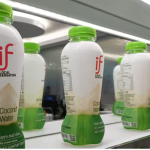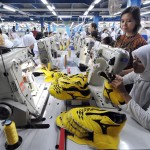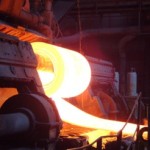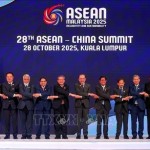Total number of posts 463.
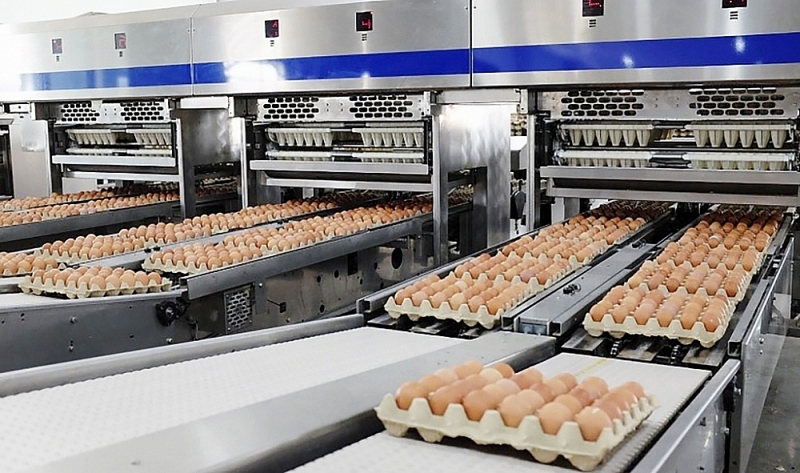 Despite positive growth in revenue thanks to the recovery of consumption markets after difficulties caused by the pandemic, the surge in input costs has caused many businesses to fall into negative growth, even losses in the first quarter of 2022.
Despite positive growth in revenue thanks to the recovery of consumption markets after difficulties caused by the pandemic, the surge in input costs has caused many businesses to fall into negative growth, even losses in the first quarter of 2022.
Agriculture bears increasing costs
Dabaco Vietnam Group Joint Stock Company has announced its financial statements for the first quarter of 2022 with after-tax profit falling by 98% year-on-year, reaching only VND8.6 billion. Specifically, while sales in the first quarter rose by 13% to VND2,806 billion, Dabaco's costs increased by 38% to VND2,551 billion, so the remaining gross profit was only VND254 billion, down 60% compared to the profit of the first quarter of 2021.
According to Dabaco's Board of Directors, in the first quarter of 2022, the livestock industry has been facing dual difficulties from the Covid-19 pandemic and epidemics in livestock and poultry, especially African swine fever. In addition, the complicated developments of the Russia-Ukraine conflict have also affected the supply chain of input materials and international trade and transport activities. The disruption of the supply chain and difficulties caused by the pandemic have greatly affected production and consumption, making animal feed surge while the price of livestock products has not increased.
Deputy General Director of Hoang Anh Gia Lai International Agriculture Joint Stock Company (HNG) Nguyen Hoang Phi said, in the first quarter of 2022, the purchase price of fertilizers and agricultural materials and fruit packages grew 130%, and 15% respectively year-on-year.
Besides, the shortage of refrigerated containers for exporting fruit has raised costs. Transport time and customs clearance extended from 12 days to 35 days, causing accumulation of goods, increasing warehousing costs and reducing fruit quality.
Specifically, the cost of road transport rose by 26%, from VND19 million/container to VND24 million/container; sea freight costs even soared by 237%, from US$785/container to US$2,650/container compared to the first quarter of 2021. The above factors led to a loss of VND112.6 billion in the first quarter of 2022 of HNG, while in the same period last year, the company had a profit of VND6.6 billion.
Hoa Phat Group's agriculture segment also recorded a second consecutive quarter of negative profit when its sales fell by nearly 28% year-on-year and an after-tax loss of VND55.8 billion. Hoa Phat's agricultural segment includes raising cows, pigs, chickens and animal and poultry feed. The company has maintained a suitable output level and saved costs to give a good price when the price of input materials surged.
Cement and steel go backwards
The post-pandemic market outlook is considered to bring a strong breakthrough for enterprises in the construction material industry such as cement and steel after a long period of pent-up demand due to Covid-19. However, although the increase in consumption volume helped increase revenue, the cost price has surged, which has eroded the profits of enterprises. For example, Ha Tien 1 Cement Joint Stock Company (HT1), although the revenue of the first quarter of 2022 increased by nearly 23% year-on-year to VND2,072 billion, the cost rose by 19%, making gross profit decrease by nearly 32% to VND163 billion. After deducting expenses, HT1's net profit plummeted 74% to nearly VND25 billion year-on-year.
Similarly, after-tax profit of Vicem Hai Van Cement Joint Stock Company also decreased by 8% to VND400 billion in the first quarter of 2022; Vicem Gypsum Cement Joint Stock Company even lost more than VND2.3 billion, doubling the loss in the same period in 2021.
Poor profits of cement companies come from cost pressure when raw materials and fuel prices have soared. In a report on the performance in the first quarter of 2022, General Director of HT1 Luu Dinh Cuong said the control and the pandemic and the recovery of the world economy, so the demand for using raw materials and fuel increased. At the same time, the Russia – Ukraine war and Western embargo and sanctions have greatly affected the world economy, making the prices of coal, oil and other raw materials skyrocket. Prices of main fuels for cement production such as coal, oil and gypsum all surged in the first quarter of 2022, causing gross profit to decrease by more than VND76 billion year-on-year.
In the document of the 2022 Annual General Meeting of Shareholders, the leadership of Vicem Hoang Mai Cement Joint Stock Company said the world’s coal price at the end of February 2022 rose from US$230/ton to US$425/ton in early March 2022. Crude oil price also peaked, touching the threshold of US$125/barrel, the highest level in the past 14 years, and is expected to continue to increase in the near future.
According to the Vietnam Cement Association, coal accounts for about 35-40% of cement production costs. In which, 66% of coal must be imported because the cement production costs in Vietnam largely depend on the world’s price of coal. The wet and rainy weather in the Northeast of Australia and the high demand for fuel after the pandemic and the Russia-Ukraine conflict are the main reasons for the sharp increase in global thermal coal prices since the third quarter of 2021.
According to the Australian Department of Industry, Science, Energy and Resources (DISR), the average price of thermal coal in the first quarter of 2022 in Newcastle rose 180% to US$247/ton year-on-year and 26% quarter-on-quarter.
Under the pressure of high production costs, cement companies also increased their selling prices from VND100,000-150,000/ton (an increase of 7-10% compared to the beginning of the year) in late March 2022.
Similar to cement enterprises, many steel enterprises also recorded gloomy business results due to the sharp increase in input costs. For example, at Hoa Sen Group Joint Stock Company (HSG), although its revenue grew by 17% in the second quarter of the fiscal year 2021-2022, the company’s after-tax profit decreased by 23% to VND234 billion. This was mainly due to the surge in cost prices of 25%, causing gross profit to decrease by 24%. Financial expenses, selling expenses, and administrative expenses also soared, causing the company's net profit to shrink significantly.
Many other steel enterprises are in the same situation as Vietnam Steel Corporation when their net profit decreased by 51% to only VND195 billion; Tien Len Steel Group Joint Stock Company’s decreased by 28% to VND86 billion; SMC Trading Investment Joint Stock Company’s plunged by 63% to VND80 billion. The common point of all enterprises is that the cost prices rose more strongly than the growth of sales, narrowing the profit margin.
Source: Customs News







